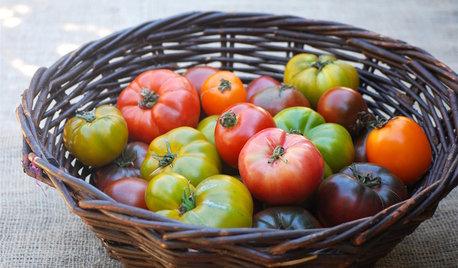So I let a few tomato plants volunteer this year if they were in an area of the garden I could deal with. In the area I did sungold last year I planted Garlic and on the outside of the raised bed a volunteer grew and I just pounded in a piece of conduit for support and have been tying it up.
Now I'm no genius but if the fruit looks like sungold, and not one of it's two parents, since sungold is a hybrid, does that mean I got lucky and have a 2nd generation Sungold? Or could it look like sungold but have other characteristics of either parent? I have not eaten one yet, but maybe will tonight since a few of the fruit are nice and orange.
CH







carolyn137
digdirt2
Related Professionals
Broadlands Landscape Contractors · Brookfield Landscape Contractors · Canby Landscape Contractors · Abington General Contractors · Florida City General Contractors · Midlothian General Contractors · Rosemead General Contractors · Waterville General Contractors · Fredericksburg Decks, Patios & Outdoor Enclosures · Fort Lee Decks, Patios & Outdoor Enclosures · Grain Valley Decks, Patios & Outdoor Enclosures · Green Bay Decks, Patios & Outdoor Enclosures · Miami Decks, Patios & Outdoor Enclosures · Roseville Decks, Patios & Outdoor Enclosures · St John's Kirk Decks, Patios & Outdoor Enclosurescoconut_headOriginal Author
mckenziek
carolyn137
coconut_headOriginal Author
containerted
coconut_headOriginal Author
mckenziek
seysonn
reginald_317
digdirt2
reginald_317
mckenziek
seysonn
coconut_headOriginal Author
Bets
coconut_headOriginal Author
michelliot
reginald_317
mckenziek
seysonn
reginald_317
coconut_headOriginal Author
reginald_317
seysonn
Bets